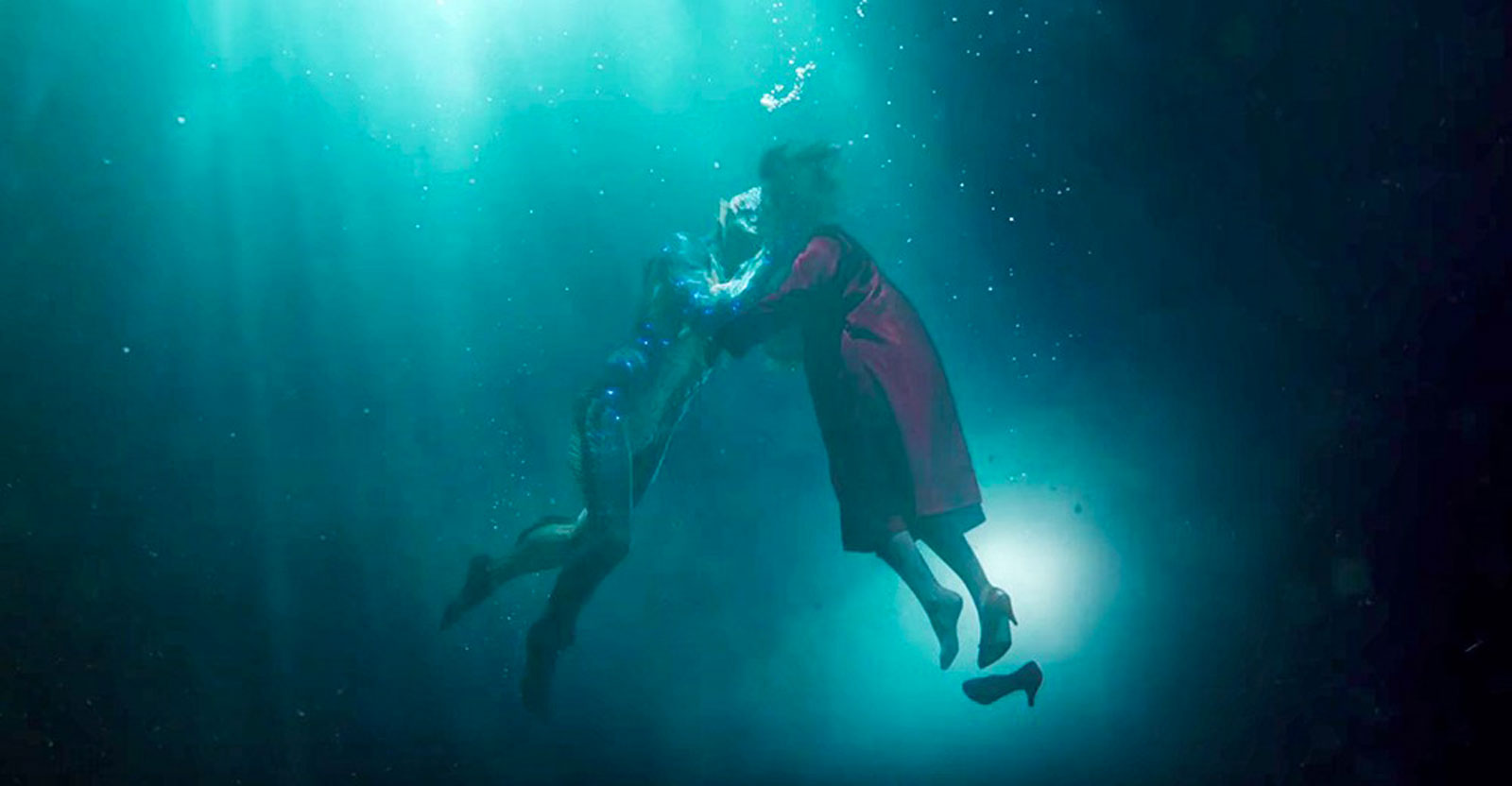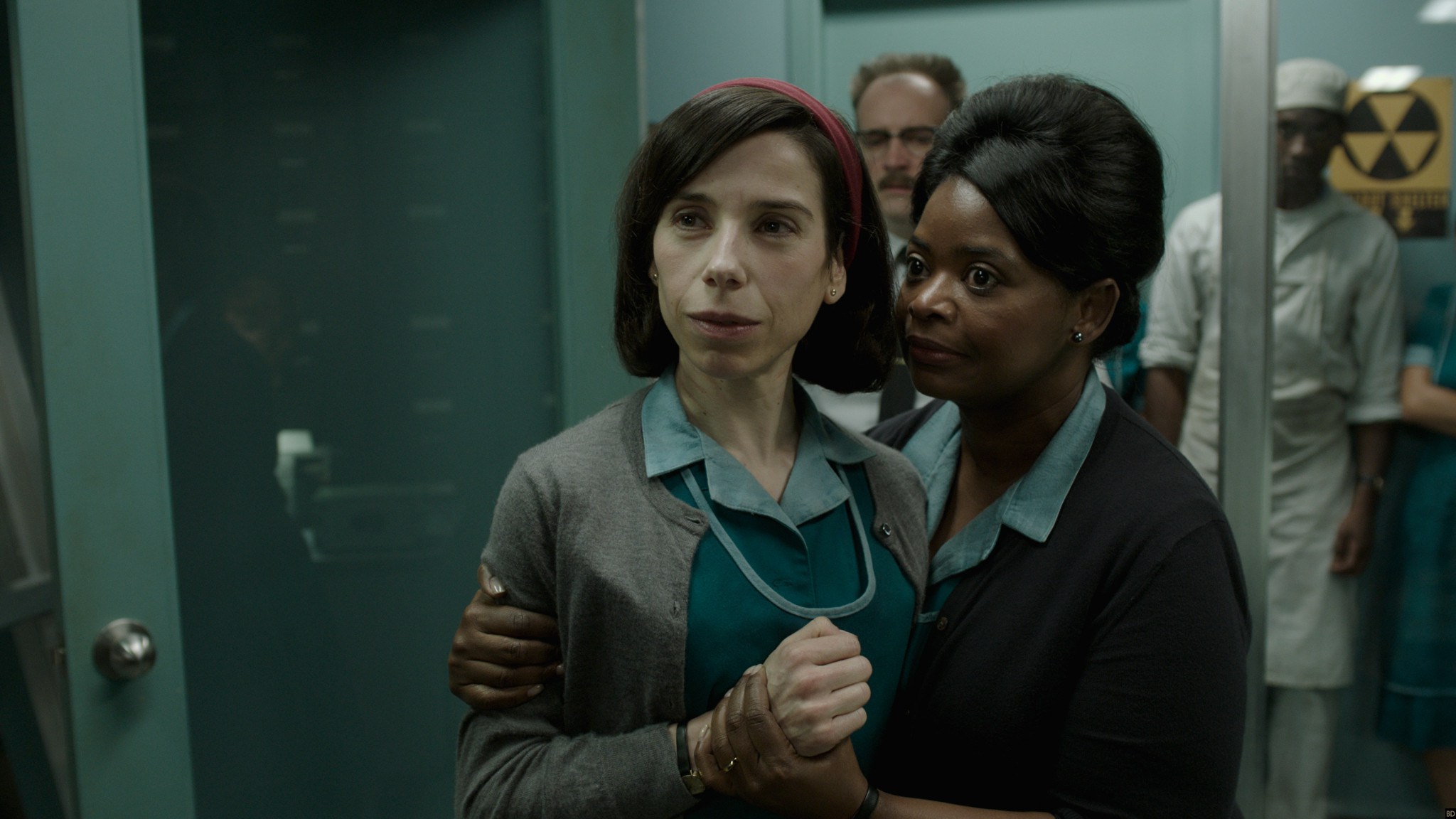
Inspired by “The Creature from the Black Lagoon,” a 1950s monster flick, Guillermo del Toro’s “The Shape of Water” is one of the biggest critical darlings of the year. It currently holds a 92 percent rating on Rotten Tomatoes and is nominated for a near record-breaking thirteen Academy Awards.
Assuming the Oscars give out awards based on merit, I have absolutely no idea why “The Shape of Water” is a contender for Best Picture. Why is such a fundamentally boring movie considered one of the best of 2017?
Set in the midst of the Cold War, “The Shape of Water” follows Elisa (Sally Hawkins), a cleaning worker at a top-secret U.S. government facility. Elisa is mute, due to an injury she sustained as an infant, and her co-worker and friend Zelda (Octavia Spencer) acts as her interpreter on a day-to-day basis. One fateful day, Colonel Richard Strickland (Michael Shannon) brings in a captured, mysterious sea creature into the facilities. Elisa begins interacting with the strange creature, who’s physically tortured by the villainous Strickland, and eventually falls in love with it. Meanwhile, a Russian spy within the facility (Michael Stuhlbarg) has his own plans for the strange, powerful creature.

In terms of performances, the film is mostly excellent. Hawkins delivers a beautifully expressive and sensitive performance, able to convey profound emotion without saying a word. Richard Jenkins, playing Elisa’s friend and neighbor, is a wonderfully sentimental and comforting presence on screen. Spencer, while limited to a relatively small and uninteresting role, still manages to give an incredibly naturalistic performance.
On a technical level, the film is similarly outstanding. With its set design, cinematography, costumes, and more, del Toro creates a fantastic mix of 1960s Americana and gothic horror aesthetics. The government lab where Elisa works is chilling in how it blends familiar and unfamiliar. It stands as a mix of standard offices and massive strange laboratories. Much of the film’s set design is similarly strange and familiar in a way that makes the odd narrative a bit easier to swallow.
While the film is aesthetically pleasing, it’s difficult to find praise for it elsewhere. Its screenplay, written by del Toro and Vanessa Taylor, is at the heart of the film’s problems. It’s so deeply flawed and sloppily written that it ruins what could’ve been a wonderful, modern-day fairy tale, and turns it into a complete bore.
Take the film’s villain, Colonel Strickland. He’s almost cartoonishly malicious. He’s a mishmash of various American evils: violence, racism, sexual harassment, etc. He even buys a Cadillac as part of his mid-life crisis. He captured the creature from a river in South America, a not-so-subtle reference to the United States’ destructive military actions there. Del Toro and Taylor were so hell-bent on political commentary that they forgot to create a compelling villain. He has seemingly no motivations for anything he does and is a series of clichés, played with over-the-top zeal by Shannon, an otherwise fine actor.
But the screenplay’s problems don’t begin and end with Strickland. One can predict the ending from the very beginning, so the second half lacks any narrative tension. All of this would be fine if the film had compelling characters, but like Strickland, they’re mostly dull and uninteresting. Jenkins and Spencer, both fine actors in supporting roles do nothing but that: support the main character. What little time is spent with them is a painfully uninteresting blend of clichés and exposition. Zelda, for example, is a middle-aged woman who hates her husband for being lazy (some truly Oscar-worthy stuff).
It’s also a script full of clumsily explained symbolism. The sea creature, you see, is actually a metaphor. He symbolizes all those who have been bullied, marginalized, “otherized” (if you will) because their identity makes them look different from the rest of us. It’s a good premise, sure, but the film never really does anything with this. The parallels between his being tortured by an electric cattle prod, and say, police brutality against Black civil rights protestors, is quite clear. However, good symbolism is not enough. It doesn’t matter if a symbol is smart if one doesn’t do anything smart with it.
This brings me to my final complaint: The film has a thoughtful, relevant political message at its core, but it barely explores it in depth. Take a scene in a diner as a case example. A Black couple stands by the door, waiting to be seated. The white man behind the counter yells at them, telling them to get out. The couple briefly protests, but decide to leave, angered and frustrated by this act of discrimination.
Del Toro wisely places the camera close to the counter, several feet away from the couple. This staging is symbolic: The Black couple is pushed to the margin of the frame, just as they are pushed to the margins of society in an act of pure cruelty. It is also, unintentionally, symbolic of one of the film’s major flaws. We never see, close-up, just how that couple felt. We see a flash of their anger and their shame, but only from afar, for a brief moment. Such is the case with many of the film’s characters. For a film whose main characters include a deaf woman, a Black woman, and a gay man (Jenkins’ character), del Toro spends almost no time on the personal effects of marginalization. He takes great pains to show us how and why one is discriminated against, but spends almost no time on the lasting effects of it.
The end result is a hollow social commentary more than anything else. If one looks past the politics that del Toro is proposing, politics that celebrate “the other” and shun those who discriminate against them, what’s left is a lackluster, emotionally empty film. But given that the Academy Awards are supposed to be a celebration of great film, the thirteen Oscar nominations for “The Shape of Water” is disappointing, to say the least.
Henry Spiro can be reached at hspiro@wesleyan.edu and on Twitter @JudgeyMcJudge


Leave a Reply